Architects: Chu Ngoc Anh Architects
Area: 600 m²
Year: 2020
Photographs: Hoang Le

The project is located in the rice-growing countryside adjacent to Thai Binh city. Most of the population here is engaged in agriculture and rice cultivation. The current architecture in the village is mainly 1- to 2-story houses and very few traditional single-story rural houses with sloping roofs are left.

X
The house is where grandparents live and their grandchildren come to visit every weekend. The current land is being cultivated by grandparents with the model of “subsistence agriculture” consisting of vegetable and fruit orchards, fish ponds, chicken farms, and a combination of rice cultivation in the field.

Therefore, the design plan revolves around the most important criterion that is suitable for their lifestyle and daily living habits. Other criteria are natural ventilation, good lighting, reduced energy consumption, and utilization and reuse of rainwater for daily life.

The advantage of the house’s location when it has 3 open sides is wide views of the garden and pond and receiving good South winds. The main house facade faces the west.

Because the front of the house is near the West, the architect team has arranged the veranda to act as a transitional buffer space between the inside and the outside of the house, and at the same time-space to reduce heat for the living room with shade trees.

The use of “tree blinds” to block the sun and radiation helps to better regulate the temperature while still ensuring ventilation, and visibility and also softens the architectural space, helping people to connect closely with nature.

With the need to connect the house with a large patio and yard while still ensuring a wide view, the architect team used a rotating wooden door system that simulates the image of a traditional “table door” with maximum opening capacity for all doors.

The door with vertical wooden rails helps to regulate light and reduce sunlight in the living room. The door system opens and closes easily to change the state, connecting more easily with the porch and creating a strong material array for the main facade.

The red brick block is subjected directly to the strongest sun’s rays. Therefore, it should be strengthened against heat with the use of double-layer bricks (110mm wall) for the covering walls.
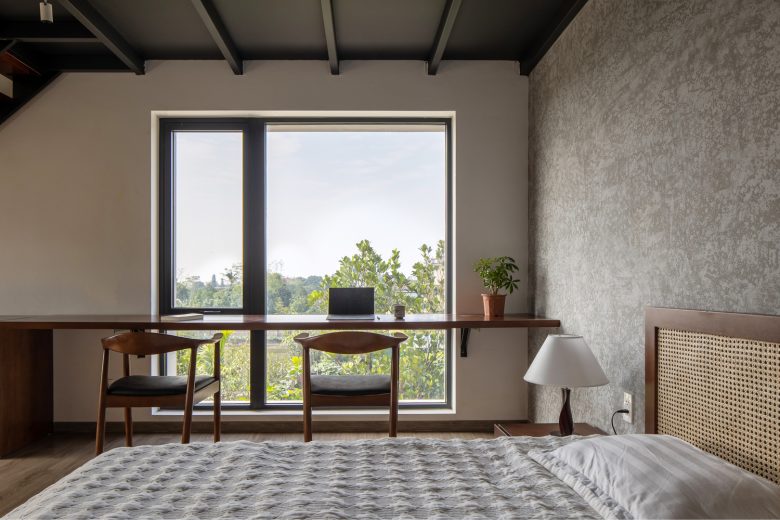
Between the 2 layers of brick is an air gap of 50mm wide that helps air circulate to slow down the heat transfer process. The outside of the walls is covered with an additional layer of red solid bricks to help prevent mold, and heat and increase the durability of the walls.

To increase the connection and interaction between family members, the kitchen area and the group of trees are put in the center of the secondary function axis. Incorporating the kitchen into the atrium also creates a vertical connection with the 2 bedrooms upstairs.

The 2nd floor is where the bedroom of the 2 sons comes to play every weekend and a table tennis room for the whole family. We took advantage of the sloping roof space to make a small attic room, suitable for bedrooms and or playing areas for children.

This small bedroom is located in the parent’s bedroom, so it is easy for parents to manage and interact with their children.
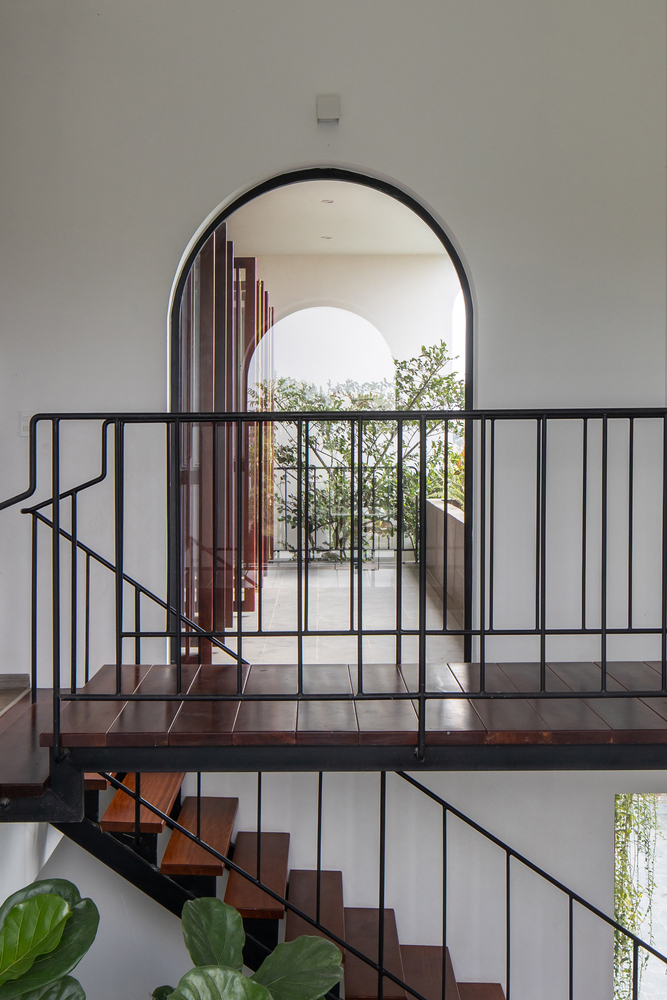
The roof tile has a large slope, so it is easy to collect rainwater for reuse. Rainwater is collected into a storage tank and a part is used for bathing and washing, the rest is used to support garden irrigation.

The house carries the spirit of contemporary rural architecture but retains traditional spaces and culture. We hope that the project will contribute to creating an identity for modern rural house architecture.
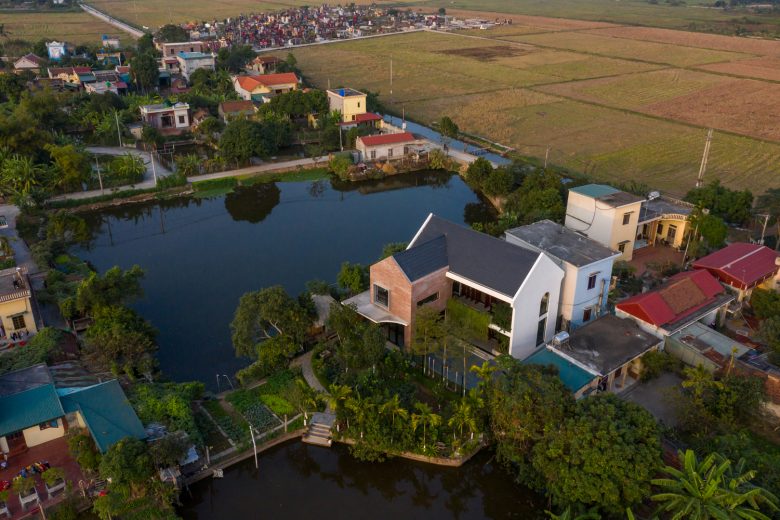
.

.
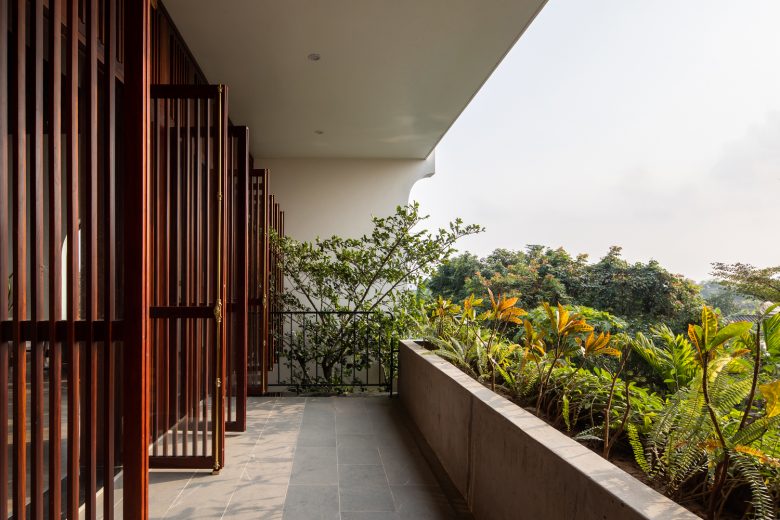
.

.
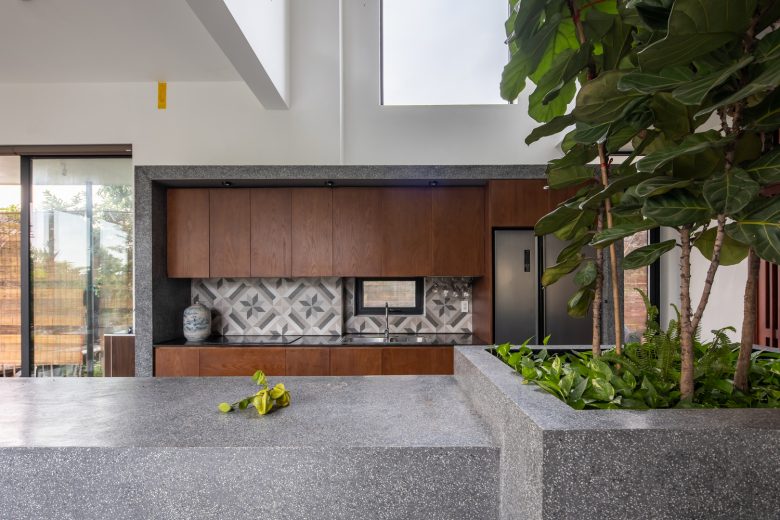
.

.

.

.

.

.

.

.
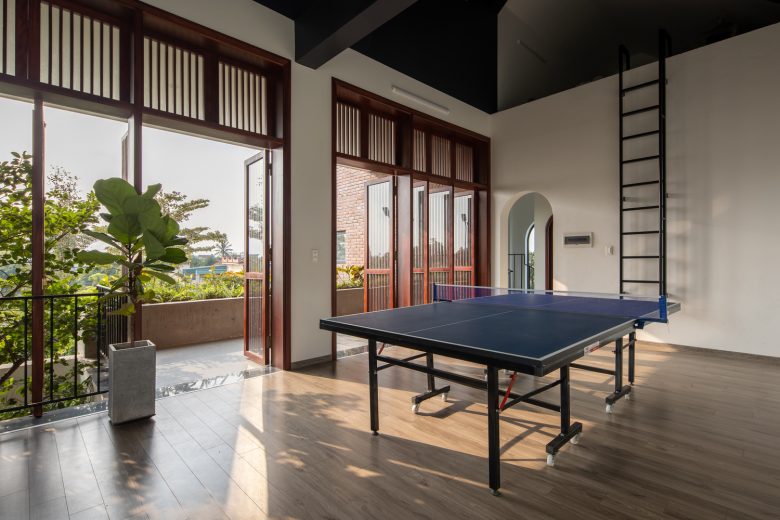
.
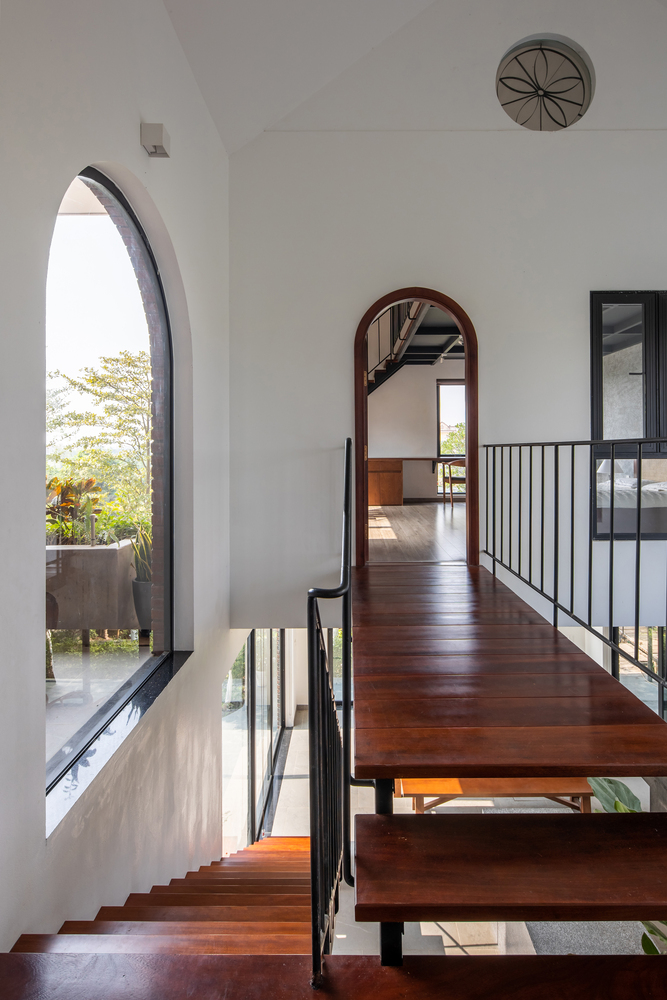
.
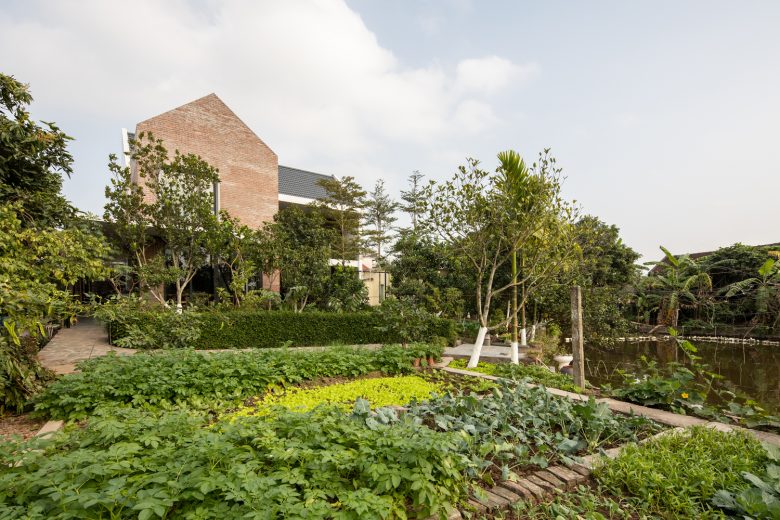
.

.
แบบแปลน

.
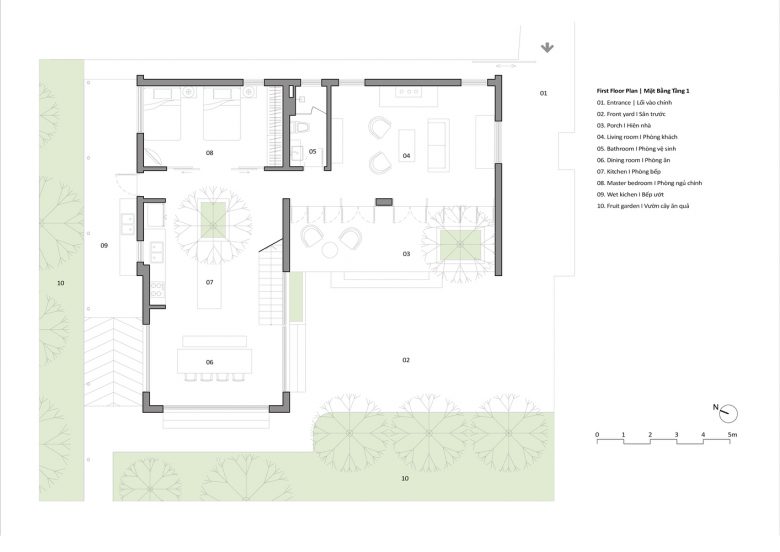
.

.
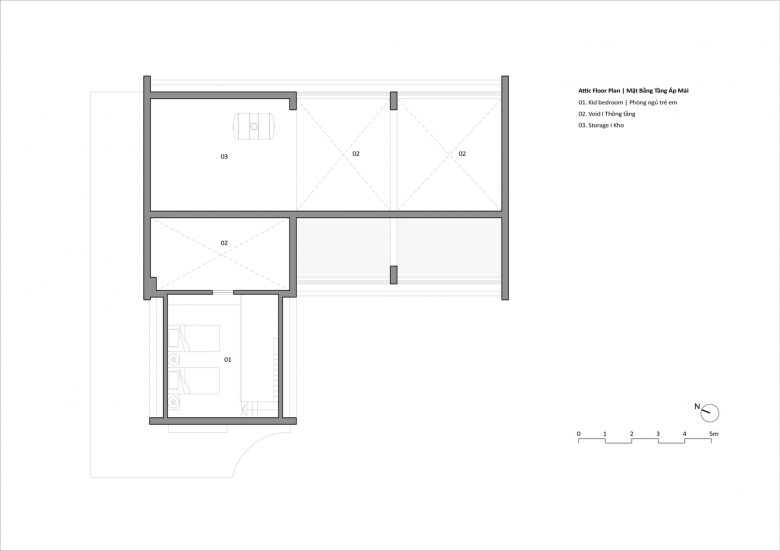
.

.
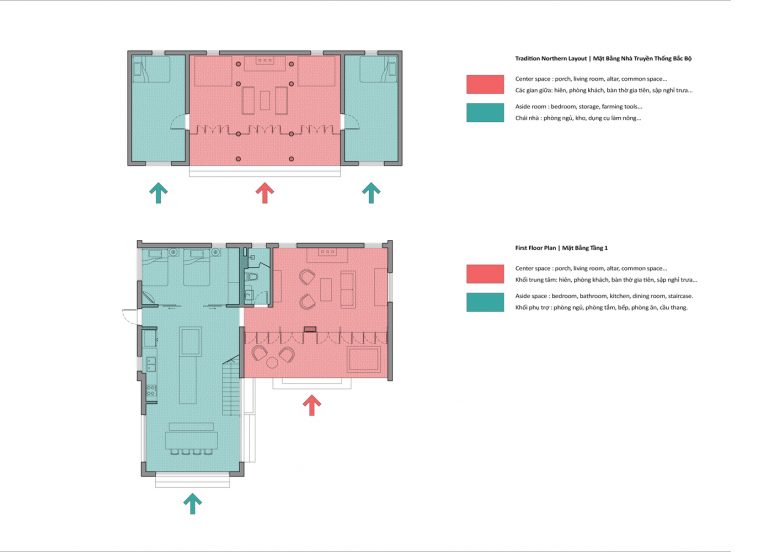
.

Credit: Archdaily
Source: Thaiupdates.info








